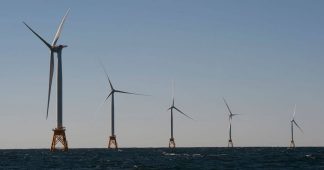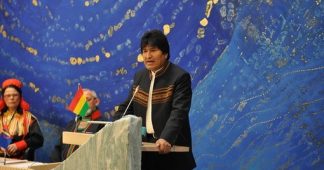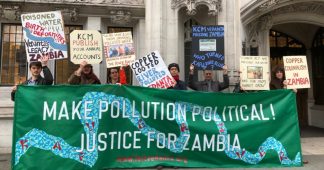Dump trucks, 3,500-horsepower strong, transport multi-ton loads down the terrace roads that line the mine. The boulders are transported by conveyor belt almost 13 kilometers (8 miles) into the valley, where the copper is extracted from the rock. This processing requires huge amounts of electricity and water, a particularly precious commodity in this arid region.
The project is operated by Antofagasta, a London-based Chilean mining corporation that owns 60 percent of the mine. The company built a hydroelectric plant in 2013, almost exclusively to supply electricity to Los Pelambres. Farmers protested against it, and have blamed the project for water shortages in the region.
Now, though, the mine is slated to grow even larger. The company is pumping additional volumes of desalinated seawater from the Pacific coast across the country. Company executives hope this will enable them to continue operating the mine for a few more years. Global demand for copper, after all, is expected to grow immensely, for power cables and electric motors. And for wind turbines.
There are great hopes that the green technology can be used to help save the climate, but that rescue also entails stripping the planet of precious resources. And this is the paradox behind what is currently the most important project of the industrialized world: the global energy transition. The dilemma, which is becoming increasingly apparent, is also on the minds of the 25,000 or so delegates at the World Climate Conference currently taking place in Glasgow. Deposits in the poor South are being exploited so that the rich North can transition to environmental sustainability. At least to a lifestyle that appears sustainable. Mathis Wackernagel, a resource researcher who lives in California, describes it as a disastrous development. “We haven’t quite thought the future through,” he says.
Wackernagel, who was born in Basel, Switzerland, in 1962, is one of the most influential figures in the environmental movement. He coined two metaphors that have influenced thinking about sustainability around the world.
One is the idea of the environmental footprint, which indicates how much land and sea area is needed to renew the resources that we have consumed. According to Wackernagel’s calculations, 1.75 Earths would be needed for the planet to regenerate itself. If all the people on the planet were to behave as wastefully as the inhabitants of Germany, it would require almost three Earths.
The other is Earth Overshoot Day, which marks the day each year on which humanity has used as many resources as the planet can replenish in a year. This year, that day fell on July 29. The two metaphors serve to underscore Wackernagel’s main point: “We are using resources of the future to pay for the present.”











